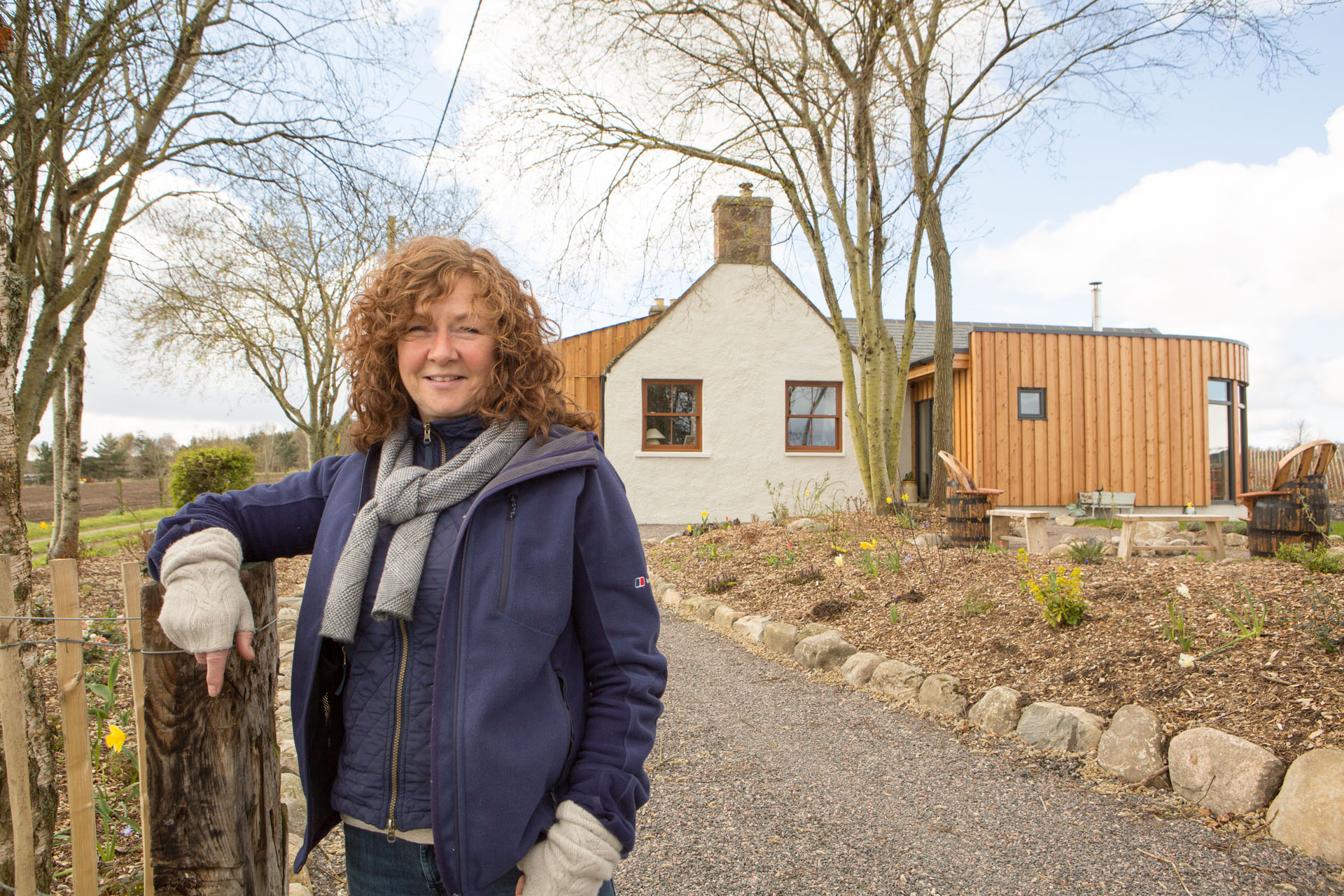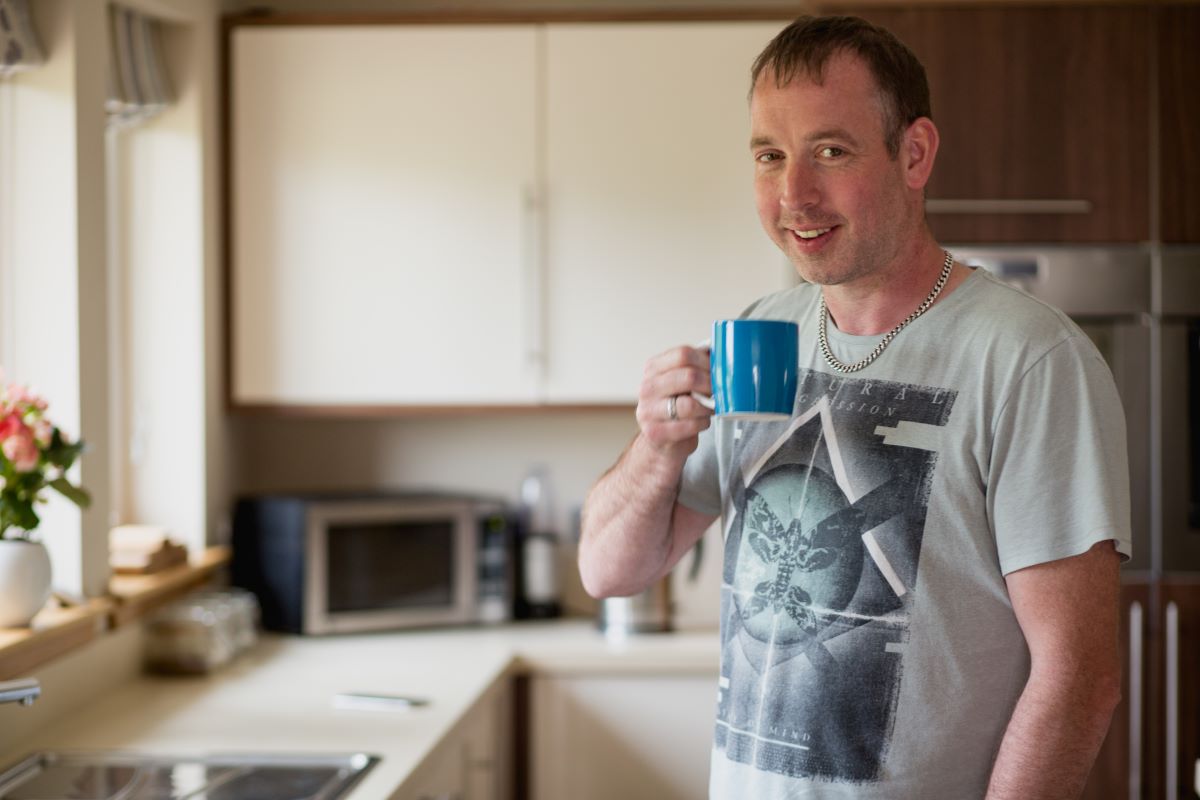Please note: the Renewable Heat Incentive closed to new applications on 31 March 2022.
People all over the UK are making the move to home renewables. Whether it’s out of concern for the environment, an effort to cut fuel bills, or a desire to have the latest technology, many householders are living lower carbon lives by harnessing natural resources for heat and power.
A third of UK electricity was generated by renewables in 2018, up an impressive 10% from 2015. While this will partly be down to larger scale wind and solar farms, the systems we choose for our own homes can also help mitigate the immediate problem of climate change.
Home renewables choices
There are many options out there, and the right choice will depend on your home and circumstances. You can find a lot more information about how to generate your own renewable energy on our renewables pages.
Two homeowners shared their experiences of installing home renewables, and the benefits and challenges that come with embracing a greener home.
Turning up the heat in the Highlands
Caroline lives in the Scottish Highlands and previously relied on storage heaters to heat her pre-1919 home. This was a costly option and didn’t provide enough heat. In 2014 Caroline made the switch to a biomass boiler, which burns wood pellets to power her central heating system and provide hot water. Along with the biomass boiler Caroline got underfloor heating, increased insulation and new radiators.
Caroline has found the biomass system easier to control than her old storage heaters. She doesn’t waste as much energy and her heating bill is 40% lower than it would have been with storage heaters. Caroline explained, ‘Since getting the biomass wood pellet boiler installed, and a wood burning stove in the old part of the building, I’ve noticed a drop in bills. I can dictate when the heating’s on and when it’s not, and it’s a much cheaper form of heating anyway. So I’ve got cheaper bills, and I’ve got a warmer house when I want it.’
As well as cheaper fuel bills, Caroline gets quarterly payments from the Renewable Heat Incentive (RHI). Caroline used an interest-free loan from the Scottish Government to help with installation costs and reckons her system was a worthwhile investment. She said, ‘Once the loan has been paid off and I receive the repayments [from RHI], I will actually be in pocket as a result!’
There are a few things to consider when switching to biomass, like making sure you’ve got enough room to store the fuel and can source a supply of logs or pellets. Caroline said, ‘Refilling the hopper with pellets could be an issue for some people in terms of the weight of the bags of pellets.” Choosing a biomass boiler with an automatic feed hopper means the boiler doesn’t need to be refuelled as often.’
Energy on cloudy days too
Trevor from Dumfries and Galloway was keen to replace his expensive LPG heating system. He decided to install a solar PV system to generate electricity and an air source heat pump to heat his home and provide hot water. Solar PV systems convert sunlight into electricity, even on a cloudy day, and air source heat pumps can extract heat from the outside air even when the temperature is as low as -15⁰C.
Trevor is pleased with his new systems, which only took a few days to install and didn’t cause much disruption. Since having the solar PV and heat pump installed, Trevor has used his smart meter to track his energy use and estimates he has halved his energy bills. He also benefits from payments for the heat and electricity he generates from the RHI and Feed-in Tariff (FiT). The Energy Performance Certificate (EPC) rating for Trevor’s home has jumped up from a D to an A and he is pleased to report, ‘I have saved money and can afford to have the house warm all the time.’
Find out what financial support is available in your area.
Let’s talk numbers
How much money you’ll save will depend on your circumstances. With solar PV, you’ll save more if you’re home during the day and can use the renewable energy while it’s being generated. If not, it’s worth thinking about an energy storage system, which can capture the electricity for you to use when you need it. Now the FiT scheme has closed, solar PV may not be as profitable as it once was, but an average system will save around 1.6 tonnes of carbon dioxide a year, making it a good way to cut your carbon footprint and become more self-sufficient.
Savings from installing a biomass boiler or air source heat pump vary depending on your current heating system. You can make the biggest savings if you’re replacing old storage heaters or an old LPG boiler. You’ll also save if you’ve got an old oil or gas boiler, but if you’re switching from a new, A-rated oil or gas boiler your bills could increase. It’s also important to think about insulation. Any type of renewable heating system, like a heat pump or biomass boiler, will perform better in a well-insulated home.
Get started
- find out more about generating your own energy
- read more case studies on the Green Homes Network
- see what support is available from Home Energy Scotland

